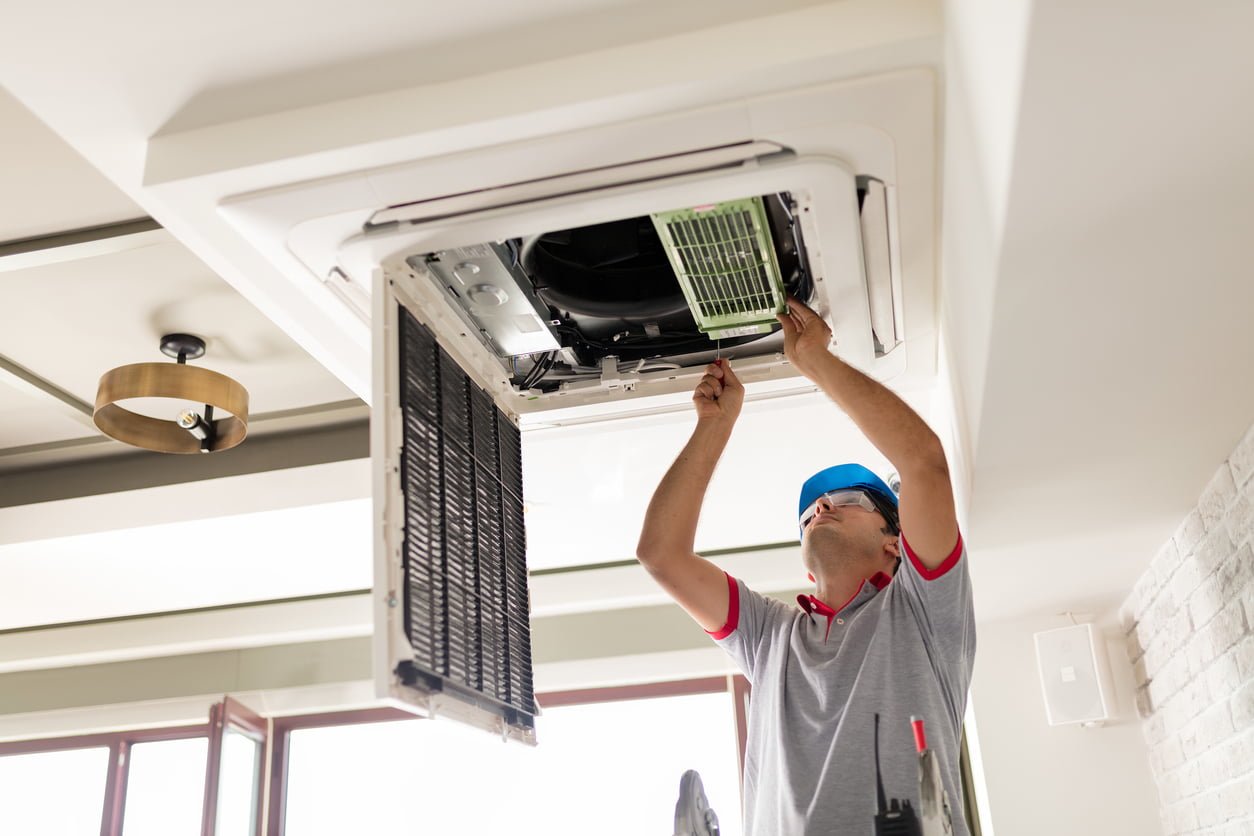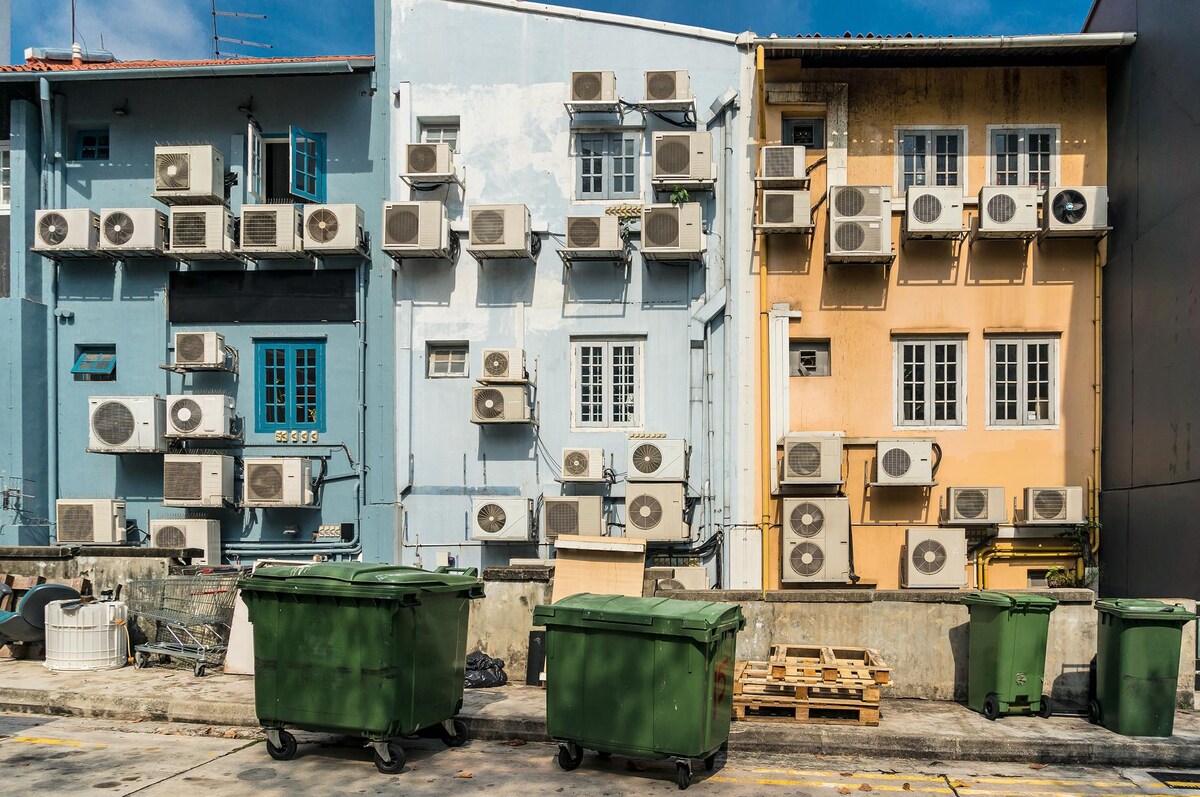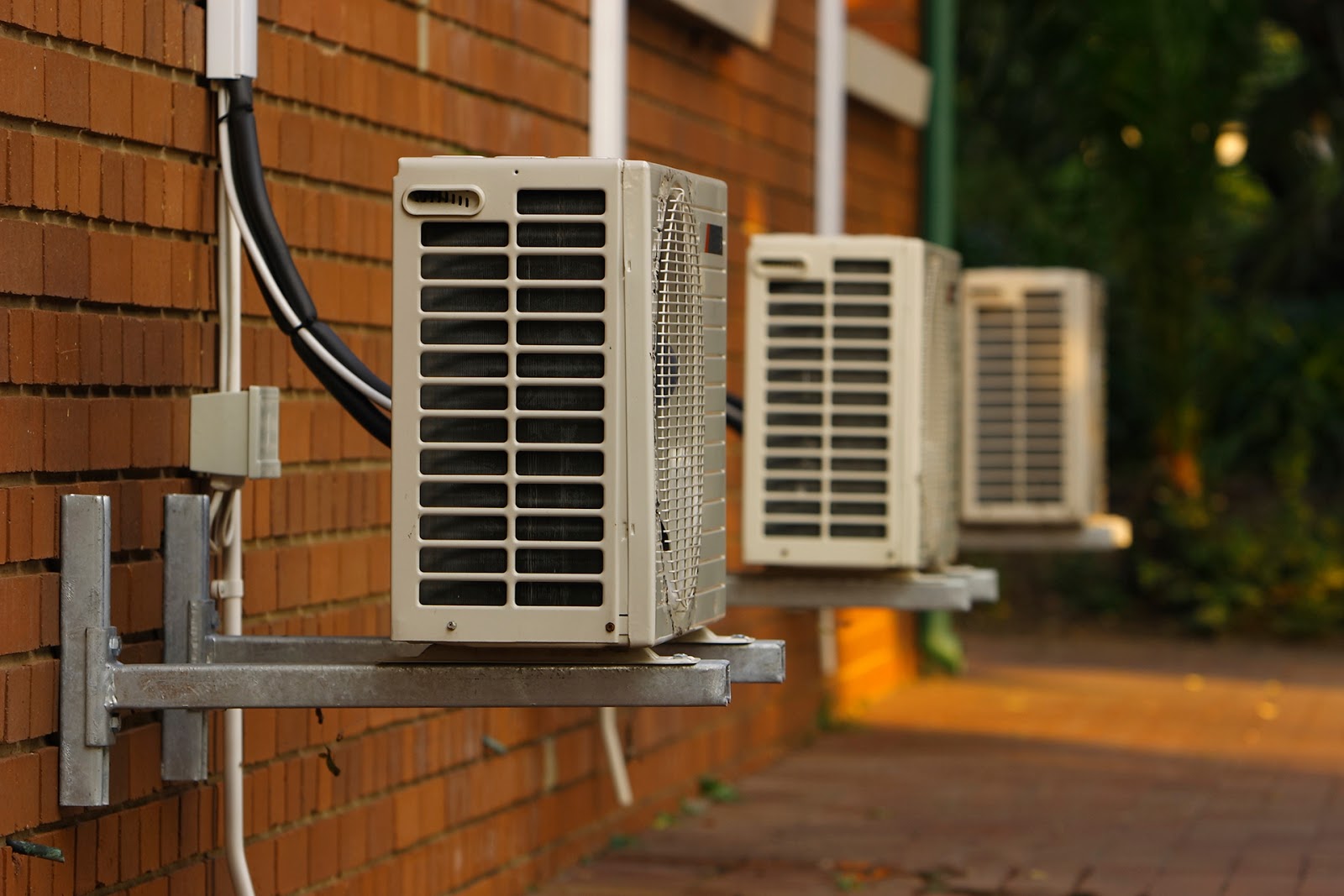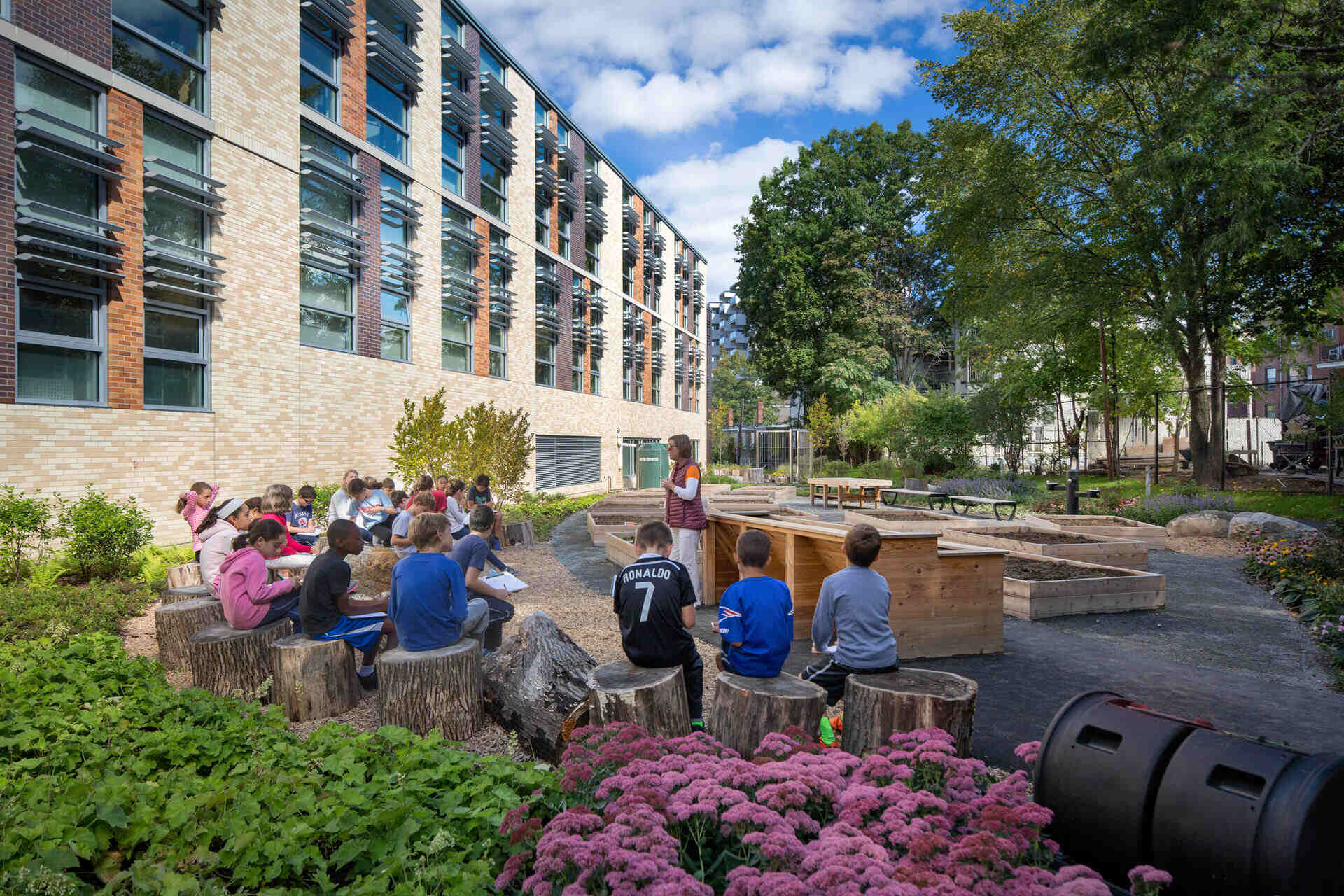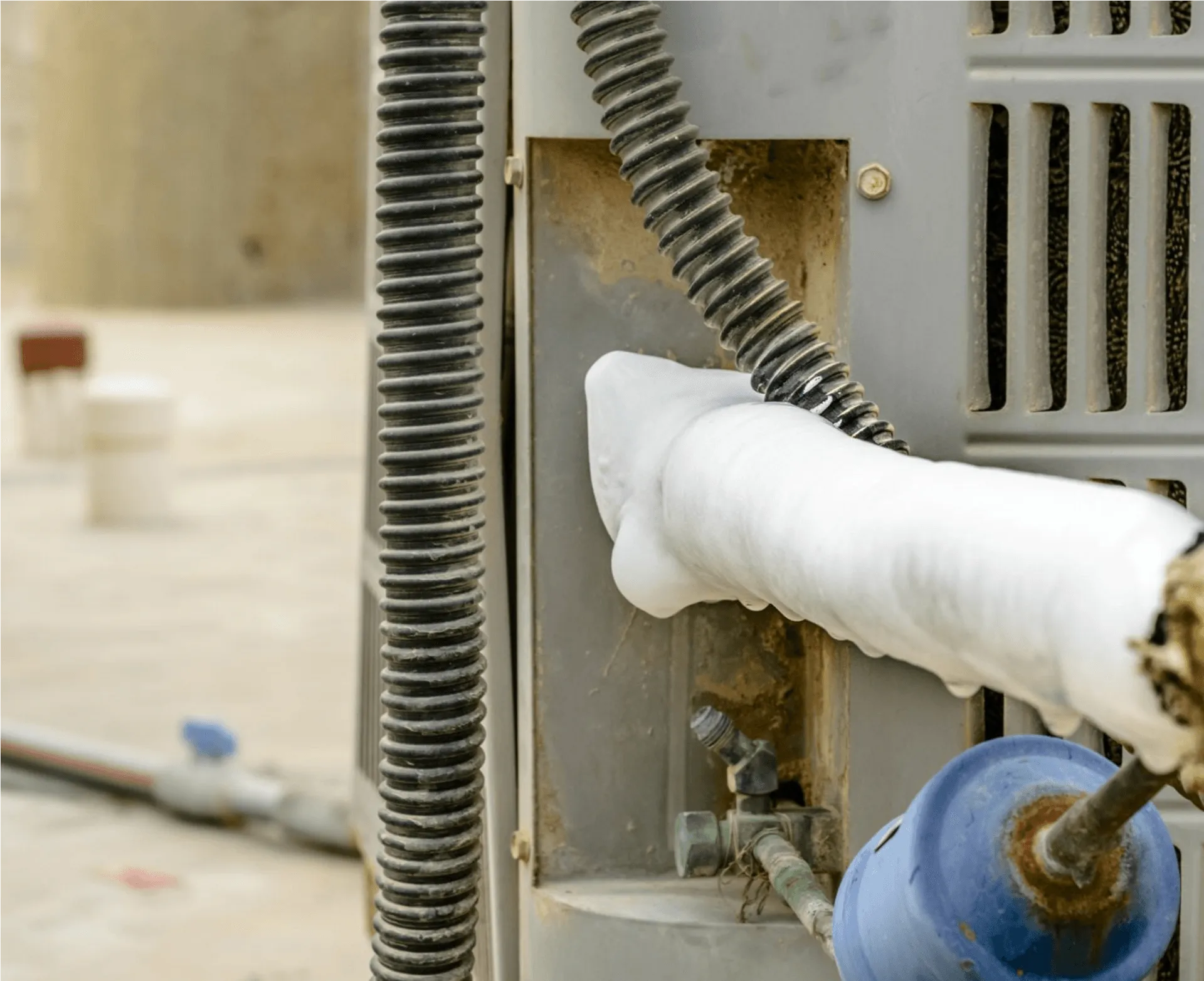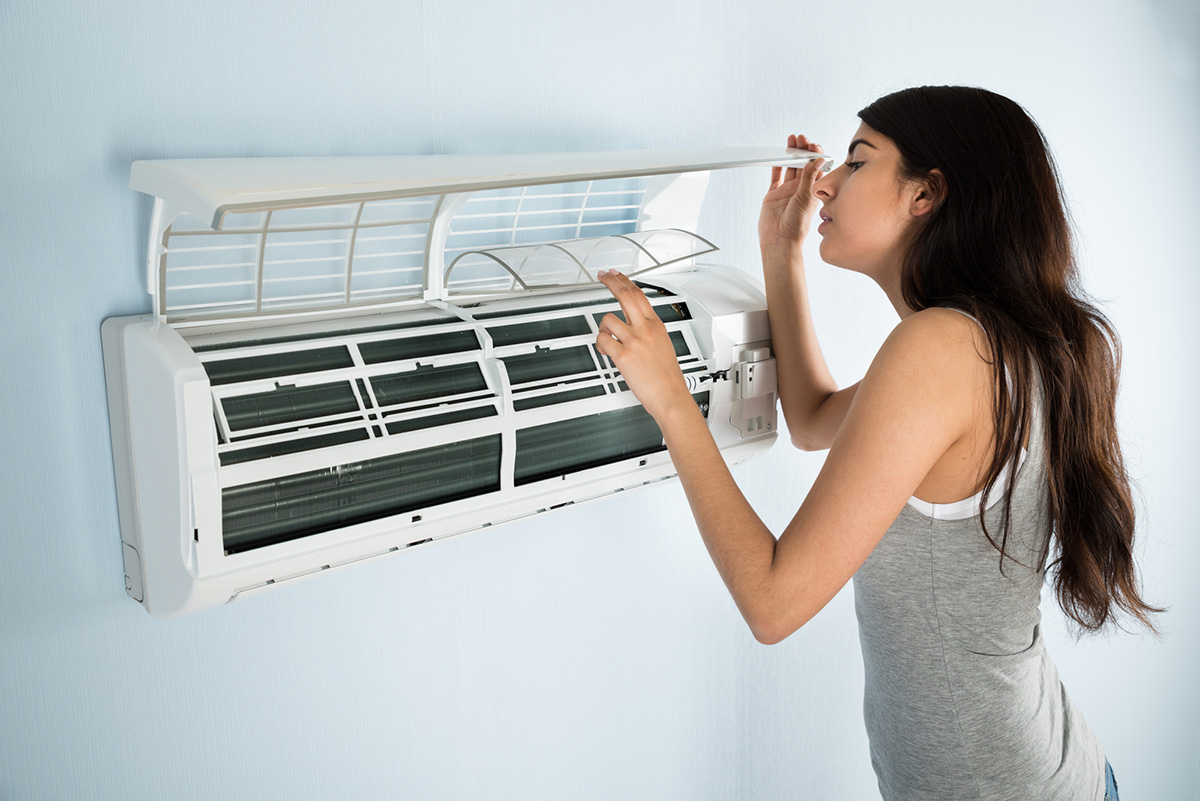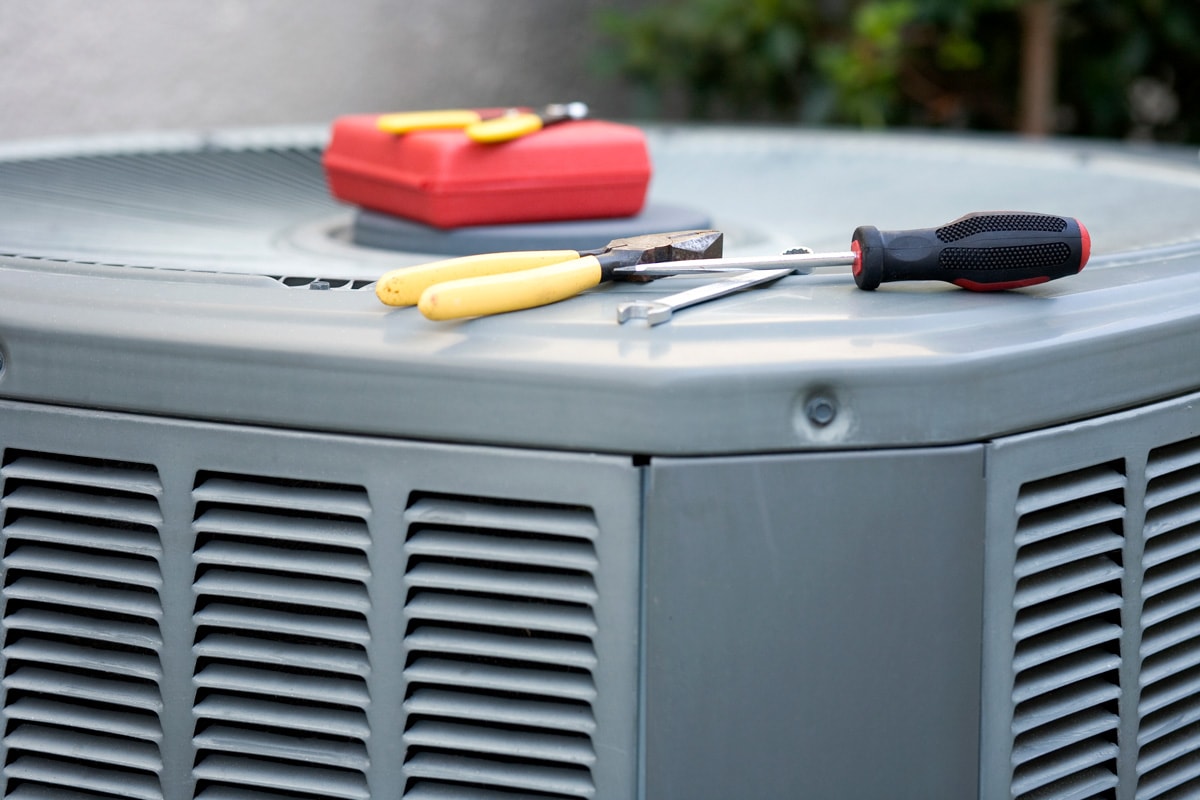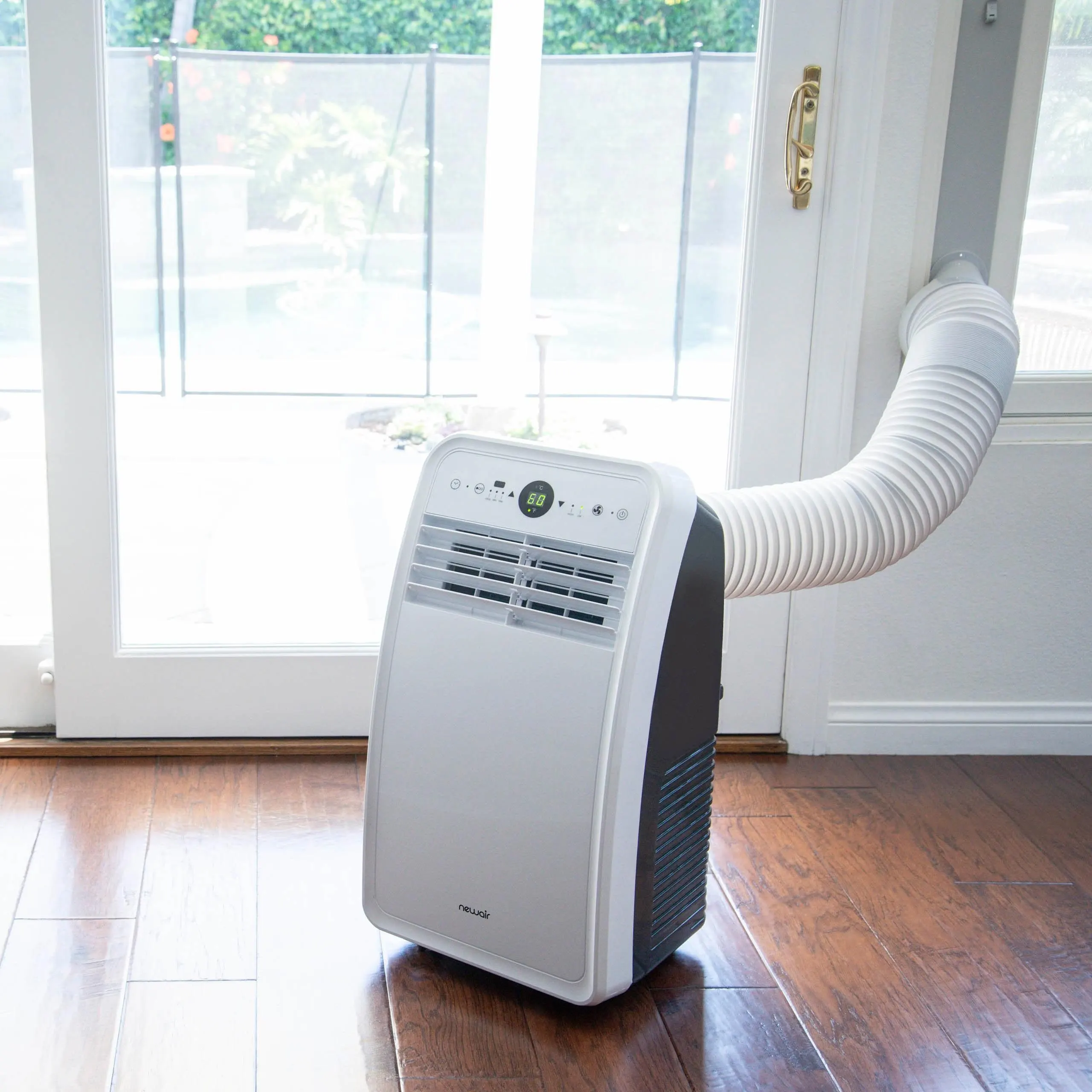Home>Home Maintenance>Why Do Schools Not Have Air Conditioning
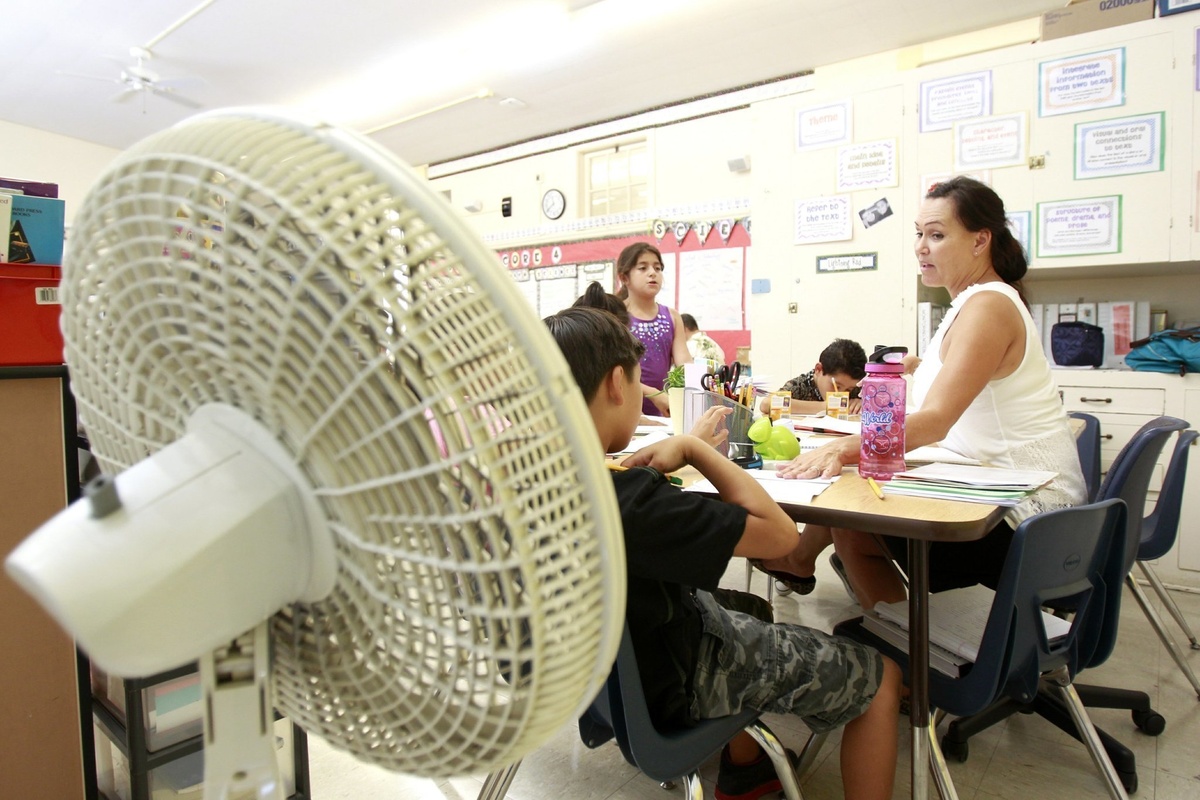

Home Maintenance
Why Do Schools Not Have Air Conditioning
Modified: September 1, 2024
Discover why schools often lack air conditioning and the importance of home maintenance. Learn how to improve indoor comfort and reduce energy costs.
(Many of the links in this article redirect to a specific reviewed product. Your purchase of these products through affiliate links helps to generate commission for Storables.com, at no extra cost. Learn more)
Introduction
When the scorching heat of summer arrives, many students and teachers find themselves sweating profusely in classrooms without air conditioning. Despite the advancements in modern technology, it is surprising to see that a significant number of schools still lack this essential amenity. So, why do schools not have air conditioning?
To understand this issue, it is essential to delve into the historical context, examine education budgets and priorities, consider building infrastructure limitations, address health and comfort concerns, discuss environmental impact, explore alternatives, and seek possible solutions. By examining these factors, we can gain a comprehensive understanding of why air conditioning is often absent from schools and what can be done to address this issue.
Let’s explore each of these areas in-depth and uncover the reasons behind the absence of air conditioning in schools.
Key Takeaways:
- Schools often lack air conditioning due to historical reasons, budget constraints, and building limitations. This can affect student health and learning, but there are alternative solutions to create comfortable environments.
- While air conditioning is important, it can have environmental impacts. Schools can use passive cooling techniques, energy-efficient systems, and partnerships to create comfortable learning environments while minimizing energy consumption.
Historical Context
To grasp the lack of air conditioning in schools, it is crucial to consider the historical context. The use of air conditioning in public schools was not widespread until the mid-20th century. Before this time, schools relied on natural ventilation and methods such as window fans or opening windows to regulate temperatures.
During the early years of education, air conditioning was seen as a luxury and not a necessity. Many schools were built in an era when air conditioning was not a standard feature in buildings. As a result, these older structures were not designed to accommodate air conditioning systems. Retrofitting these buildings with air conditioning can be challenging and costly.
Additionally, the implementation of air conditioning was often gradual and dependent on the availability of funds. Schools in wealthier areas or with higher tax revenues were more likely to invest in air conditioning, while those in economically disadvantaged areas were often left without it. This has led to an inequality in access to temperature-controlled learning environments.
Over time, the perception of air conditioning has evolved, and it is now commonly regarded as a necessary feature for comfortable learning environments. However, budget constraints, outdated infrastructure, and competing priorities continue to hinder the widespread installation of air conditioning in schools.
Understanding the historical development of air conditioning in schools helps shed light on why many schools still lack this amenity today. While older buildings may struggle to accommodate air conditioning, newer constructions may prioritize other aspects of school design and functionality over cooling systems.
Education Budgets and Priorities
The absence of air conditioning in schools can also be attributed to budgetary constraints and competing priorities within education systems. School districts face numerous financial challenges, including limited funding and the need to allocate resources to various areas such as teacher salaries, instructional materials, and infrastructure maintenance.
When it comes to budget allocation, air conditioning may not always be seen as a top priority. School administrators and education officials must make difficult decisions regarding which investments will have the greatest impact on student learning and well-being. As a result, other pressing issues, such as improving curriculum, providing resources for extracurricular activities, and reducing class sizes, may take precedence over installing air conditioning systems.
Furthermore, the cost of installing and maintaining air conditioning units can be significant. Schools, especially those in economically disadvantaged areas, may struggle to secure the necessary funds for such projects. This lack of financial resources often results in delays or compromises when it comes to implementing air conditioning initiatives.
Moreover, fluctuations in energy costs can also influence budget considerations. Air conditioning requires a considerable amount of energy to operate, leading to increased utility bills. School districts must weigh these ongoing expenses against their available budgets when considering the installation or upgrade of cooling systems.
While there is a growing recognition of the importance of air conditioning in schools, it remains a challenge to secure the necessary funding and make it a priority within education budgets. However, as the awareness of the impact of indoor climate on educational outcomes increases, efforts are being made to address this issue and allocate resources accordingly.
Building Infrastructure
The lack of air conditioning in schools can also be attributed to limitations in building infrastructure. Many schools, particularly older ones, were not designed with air conditioning in mind. The absence of adequate ductwork, electrical systems, and insulation can make it challenging to retrofit these buildings with modern cooling systems.
Older school buildings were constructed with different priorities and architectural considerations. Ventilation and natural airflow were typically relied upon to regulate temperatures in these structures. Retrofitting these buildings with air conditioning would require significant renovations and modifications to the existing infrastructure, which can be costly and disruptive to the learning environment.
In addition to older buildings, some schools may lack the necessary space to accommodate central air conditioning systems. Limited mechanical rooms or structural constraints can make it difficult to install and maintain the equipment needed to provide cooling throughout the entire facility.
Furthermore, the installation of air conditioning units in individual classrooms as a temporary solution presents its own challenges. It may require modifications to the building’s electrical system to handle the additional load, potentially leading to additional costs and logistical complications.
The limitations of building infrastructure pose a significant obstacle to the widespread implementation of air conditioning in schools. While new school constructions have the advantage of being designed with modern climate control systems in mind, retrofitting existing buildings still poses challenges that need to be overcome.
Addressing this issue may involve carefully evaluating the feasibility of upgrading existing infrastructure, exploring alternative cooling solutions, and collaborating with architects and engineers to design new school buildings that prioritize energy efficiency and indoor climate control.
One tip for why schools may not have air conditioning is that it can be expensive to install and maintain, and some older school buildings may not have the necessary infrastructure for it.
Health and Comfort Concerns
One of the primary reasons why schools lack air conditioning is the assumption that students and teachers can endure the heat without significant adverse effects. However, the absence of air conditioning can have a detrimental impact on health and comfort, affecting the overall learning environment.
High temperatures in classrooms can lead to discomfort, impeding concentration and hindering students’ ability to focus on their studies. Heat-related fatigue and dehydration can also contribute to decreased cognitive performance and lower academic achievement. Moreover, teachers may find it challenging to deliver effective instruction when they are uncomfortably hot and sweaty.
Besides the impact on academic performance, extreme heat can pose health risks to students and staff, particularly those with pre-existing medical conditions. Heat-related illnesses such as heat exhaustion and heatstroke can occur when the body is unable to cool down adequately. Children, in particular, may be more susceptible to heat-related health problems due to their developing thermoregulatory systems.
Furthermore, poor indoor air quality in schools, exacerbated by the lack of air conditioning, can lead to an increased prevalence of respiratory issues such as allergies and asthma. Stuffy and stagnant air can harbor allergens, dust mites, and mold, triggering symptoms and compromising the health and well-being of students and staff.
Creating a comfortable and healthy learning environment is crucial to facilitate optimal academic performance. Air conditioning can help regulate temperatures, control humidity levels, and improve indoor air quality, ultimately enhancing the well-being and productivity of students and teachers alike.
Recognizing the importance of health and comfort in educational settings, there is a growing movement towards advocating for air conditioning in schools and ensuring that students and educators have access to a conducive learning environment.
Read more: Why Is Air Conditioning Important
Environmental Impact
While the absence of air conditioning in schools can have negative implications for health and comfort, it is important to consider the environmental impact of widespread air conditioning use. Cooling systems consume a significant amount of energy, primarily from electricity, contributing to greenhouse gas emissions and exacerbating climate change.
According to the United States Environmental Protection Agency (EPA), the electricity used for cooling in buildings accounts for a substantial portion of total energy consumption. This reliance on fossil fuels for electricity generation leads to the release of carbon dioxide and other greenhouse gases, contributing to global warming and the depletion of natural resources.
Installing air conditioning systems in schools would increase energy demand, which could further strain local power grids and result in increased reliance on non-renewable energy sources. This dependency on fossil fuels could have long-term consequences for the environment, compromising efforts to mitigate climate change and promote sustainability.
Moreover, the production, installation, and disposal of air conditioning units contribute to the carbon footprint associated with their lifecycle. Manufacturing processes often require the extraction of limited resources and generate additional emissions. Additionally, improper disposal of cooling equipment can lead to hazardous waste and contribute to pollution.
As society becomes increasingly aware of the need to reduce energy consumption and move towards more sustainable practices, it is essential to explore alternative solutions that have a minimal environmental impact. This could involve adopting energy-efficient cooling systems, utilizing renewable energy sources, implementing passive cooling techniques, and promoting awareness and education about sustainable practices among students and staff.
Striking a balance between providing a comfortable learning environment and minimizing environmental impact is crucial. Schools can play a significant role in educating students about sustainable practices and demonstrating responsible energy consumption to ensure a healthier planet for future generations.
Alternatives and Solutions
While the lack of air conditioning in schools is a prevalent issue, there are alternative approaches and potential solutions that can help create comfortable learning environments without the need for extensive air conditioning systems.
1. Passive Cooling Techniques: Schools can incorporate passive cooling techniques that take advantage of natural resources and architectural design elements to regulate temperature. This may include strategic placement of windows for cross-ventilation, using shading devices such as awnings or blinds to reduce solar heat gain, and utilizing building materials with high thermal mass to absorb and release heat slowly.
2. Energy-Efficient Cooling Systems: Instead of traditional air conditioning units, schools can invest in energy-efficient cooling systems that consume less electricity while still providing adequate temperature control. This may include evaporative coolers, ceiling fans, or geothermal cooling systems.
3. Natural Ventilation: Improving natural ventilation within schools can significantly enhance indoor air quality and thermal comfort. Properly designed ventilation systems can promote air circulation, remove pollutants, and maintain appropriate humidity levels, creating a healthier learning environment for students and staff.
4. Fundraising and Grants: Schools can engage in fundraising efforts or apply for grants specifically designated for improving indoor climate conditions. Collaborating with local communities, parent-teacher associations, and businesses can help generate additional funding and support for air conditioning projects.
5. Policy Changes: Advocacy efforts can be directed towards policymakers to prioritize air conditioning projects in schools and allocate necessary funds. Raising awareness about the importance of regulated indoor temperatures and its impact on student well-being and academic performance can help drive changes in education policy and funding priorities.
6. Public-Private Partnerships: Collaboration between schools and private entities, such as local businesses or energy companies, can provide opportunities for cost-sharing or sponsorship of air conditioning installations. These partnerships can leverage resources and expertise from both sectors to address the challenge of providing cooling solutions in schools.
It is important to note that while implementing air conditioning may be the ideal solution, it may not always be feasible due to financial constraints, infrastructure limitations, or environmental concerns. Therefore, a multifaceted approach that combines different alternatives and solutions may be necessary to create comfortable and healthy learning environments in schools.
Conclusion
The absence of air conditioning in schools can be attributed to various factors, including historical context, budgetary constraints, building infrastructure limitations, health and comfort concerns, and environmental impact. While the lack of cooling systems can lead to discomfort, impact academic performance, and pose health risks, it is important to balance the need for temperature control with sustainable practices.
Understanding the historical development of air conditioning in schools helps shed light on the challenges faced in retrofitting older buildings with modern cooling systems. Budgetary constraints and competing priorities within education systems also contribute to the lack of air conditioning, as resources are frequently allocated towards other areas deemed more critical for student learning.
Building infrastructure limitations pose a significant challenge in implementing air conditioning in schools, particularly in older buildings that were not designed with cooling systems in mind. Retrofitting can be expensive and disruptive, making it difficult to seamlessly integrate air conditioning into existing structures.
Despite these challenges, health and comfort concerns cannot be overlooked. Extreme temperatures can adversely affect student concentration, cognitive performance, and overall well-being. Heat-related illnesses and poor indoor air quality can further compromise the health of students and staff.
While the energy consumption and environmental impact of widespread air conditioning use are concerning, there are alternative approaches and solutions to consider. Passive cooling techniques, energy-efficient cooling systems, natural ventilation, fundraising efforts, policy changes, and public-private partnerships can all contribute to creating comfortable learning environments while minimizing environmental impact.
In conclusion, addressing the issue of air conditioning in schools requires a balanced approach that takes into account the unique circumstances of each educational institution. Evaluating the feasibility of retrofitting or incorporating alternative cooling solutions, advocating for policy changes, and raising awareness about the importance of indoor climate can help create comfortable, healthy, and sustainable learning environments for students and teachers.
By prioritizing the well-being and comfort of students and educators, while also considering long-term environmental consequences, we can work towards providing optimal conditions for learning and supporting the overall development of our future generations.
Frequently Asked Questions about Why Do Schools Not Have Air Conditioning
Was this page helpful?
At Storables.com, we guarantee accurate and reliable information. Our content, validated by Expert Board Contributors, is crafted following stringent Editorial Policies. We're committed to providing you with well-researched, expert-backed insights for all your informational needs.
